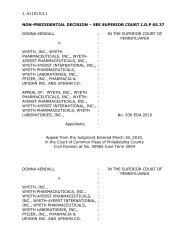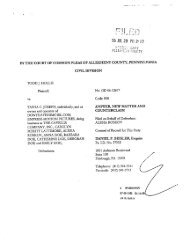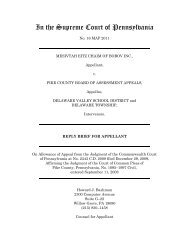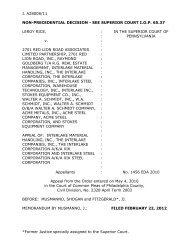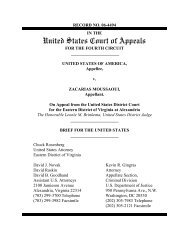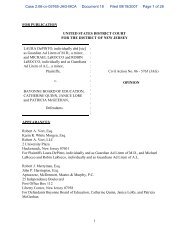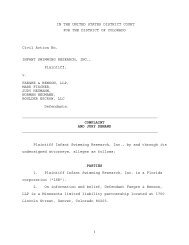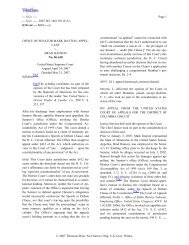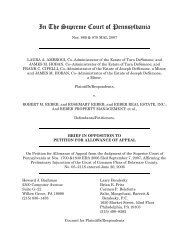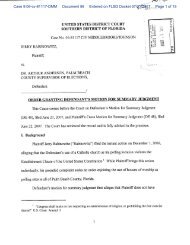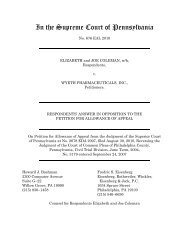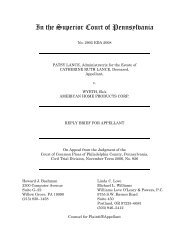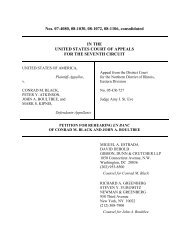Stone v. Bear, Stearns & Co., Inc. - How Appealing
Stone v. Bear, Stearns & Co., Inc. - How Appealing
Stone v. Bear, Stearns & Co., Inc. - How Appealing
You also want an ePaper? Increase the reach of your titles
YUMPU automatically turns print PDFs into web optimized ePapers that Google loves.
Case 2:11-cv-05118-LDD Document 22 Filed 05/29/12 Page 4 of 35<br />
The FINRA rules then in effect called for the appointment of a three-person panel consisting<br />
of two “public arbitrators” and one “non-public arbitrator” to hear <strong>Stone</strong>’s claim. See FINRA Rules<br />
12400, 12401, 12403. FINRA provides detailed definitions of a “public arbitrator,” see Rule<br />
12100(u), and a “non-public arbitrator,” see Rule 12100(p), but the general gist is this: public<br />
arbitrators should not be too closely tied to the securities industry, while non-public arbitrators should<br />
have significant securities-related experience.<br />
In <strong>Stone</strong>’s case, FINRA generated and provided to the parties random lists of arbitrators as<br />
follows: (1) a list of eight arbitrators from the FINRA non-public arbitrator roster; (2) a list of eight<br />
arbitrators from the FINRA public arbitrator roster; and (3) a list of eight public arbitrators from the<br />
FINRA chairperson roster. See Rule 12403. Along with these lists, FINRA sent an arbitrator<br />
disclosure report (ADR) for each of the twenty-four arbitrators, providing the employment history<br />
and other background information about each arbitrator, including education, prior awards, and<br />
conflict disclosures. (See, e.g., Doc. No. 19 Ex. B (ADR of Jerrilyn Marston)). Using this<br />
information, the parties ranked and/or struck the arbitrators on the lists. FINRA then assigned a three<br />
person panel to hear <strong>Stone</strong>’s case based on ranking and availability.<br />
By his own admission, <strong>Stone</strong> himself had absolutely nothing to do with the selection of the<br />
arbitrators in his case. (See Doc. No. 20-4 (<strong>Stone</strong> Tr. 21-25)). Even though <strong>Stone</strong> had over $7<br />
million at stake and knew that the arbitration panel would act as his “jury, so to speak,” <strong>Stone</strong> “didn’t<br />
think about . . . if it was important who was on the panel” prior to the arbitration. (Id. 23:17-24:24).<br />
Indeed, <strong>Stone</strong> did no independent research on the arbitrators at that time. (Id. 29:4-15, 36:21-37:5).<br />
Instead, <strong>Stone</strong> relied on his attorneys to conduct due diligence on the arbitration panel candidates.<br />
(Id. 34:19-35:4). According to one of the lawyers who handled <strong>Stone</strong>’s arbitration, he and his<br />
4



